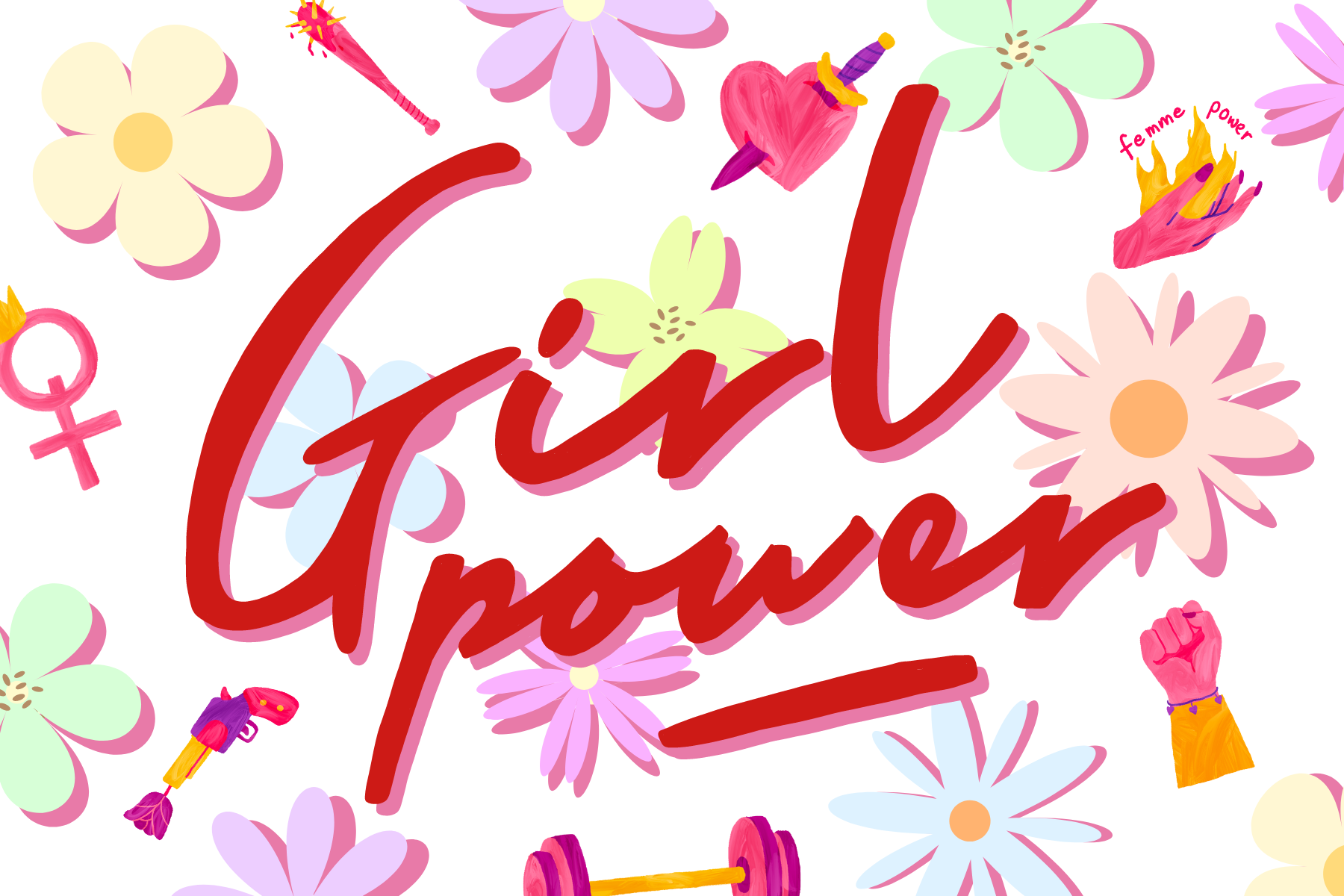For Women’s History Month, the Sustainability blog will be hosting biographies, recommendations and poetry all surrounding the theme of women’s history and rights. The story of Margaret Sanger, for example, as the pioneer of birth control; creating what would become the USA’s Planned Parenthood, and also allowing women to regulate menstruation and delay pregnancy until the time is right for them. Today’s history lesson is less about a person and more about a movement.
Steeped in the 90s and the third wave of feminism – the first characterised by the suffragette movement, the second in the 60s and focused on equal pay and gendered double standards – the girl power movement defined a generation of music, women and television, growing up under the banner of female empowerment and confidence.
The term first appeared in Riot Grrrl band Bikini Kill’s second zine: Bikini Kill #2: Girl Power (the full text of which can be found here), written by front woman Kathleen Hanna. Referred to as The Riot Grrrl Manifesto, the zine calls out reasons for women empowerment, such as “BECAUSE we are angry at a society that tells us Girl = Dumb, Girl = Bad, Girl = Weak.” They also specifically refer to being anti-capitalist, which is unsurprising, because the Do It Yourself Riot Grrrl movement came out of the sexism within the punk rock scene, carving a space for girls and women to make friends and art and express their anti-establishment, anti-patriarchy ideologies.
The term gained popularity soon after, with a number of zines growing roots and establishing themselves across America, such as The Riot Grrrl Press, which refused to charge for the distribution of the zines, not wanting to commodify the women’s ideas and identities.
While the Riot Grrrl subculture was thriving with girl power, the term didn’t come into the mainstream public consciousness until another girl group brought it there in the mid-90s. I am of course referencing the Spice Girls. Spice Girl member Geri Halliwell even noted that she was introduced to the term “girl power” through the British pop duo Shampoo’s 1996 album, Girl Power, which in turn was inspired by the work of the Riot Grrrl movement.
The Spice Girl take on girl power was different to the Riot Grrrl’s. According to the Bikini Kill Manifesto, Riot Grrrl girl power was about smashing patriarchy and capitalism, about taking the means of production “in order to create [their] own meanings” and the politics that came alongside being a woman. The Spice Girls created something more digestible for the mass populace to understand.
The Spice Girl version of girl power was about strong and loyal friendship among females as well as embracing confidence, individuality, and being boisterous and loud. It, as a culmination of the 90s, was a sex-positive response to the UK’s lad culture, a never-been-done-before cultivation of a female-only audience that was a-political and accessible for people from a number of different ideologies. Unlike Riot Grrrl’s loudly Left-leaning work, the Spice Girls remained politically neutral at the time.
Thus, girl power became part of the zeitgeist, for us all to enjoy.

Of course, criticism of girl power did appear, as criticism is wont to do.
Rebecca Hain’s 2019 book Growing Up With Girl Power discusses that the Spice Girls’ version of girl power dilutes the impact and importance of the Riot Grrrl’s intent. It’s thought that this mainstream-friendly branding of girl power was more about marketing and selling the idea of empowerment than about actually furthering the empowerment of girls. Plus, despite Bikini Kills’ Kathleen Hanna acknowledging the inspiration of the Black Power phrasing on her coining the term, and the diverse backgrounds of the women writing the original zines, it’s also been argued that in the years since, there’s a disproportionate focus on white, middle- and upper-class girls in the girl power movement.
To conclude, there is absolutely a space for girl power in this world: it has already forged one for itself, and continues to live on. But perhaps it’s the brand of girl power that matters. The meaning that it takes on. I don’t think the Spice Girls’ version of girl power is wrong, or bad – I think that for the time it was made in, for the purpose it held, it was right. It inspired millions of girls and women across numerous generations, and girl power is synonymous with the Spice Girls for that very reason. However, perhaps the Riot Grrrls had it right from the start:
Girl power
“BECAUSE I believe with my wholeheartmindbody that girls constitute a revolutionary soul force that can, and will change the world for real.”
Further reading (and inspirations for this article):
- ‘As a 1990s teenager, the world gave us power and pornification’
- Girl of Color-Power: Resisting the Neoliberal Girl Power Agent
- Do It Yourself Girl Power: An Examination of the Riot Grrrl Subculture
By Bethany Climpson, Sustainability Engagement Assistant
 Sustainability
Sustainability Bethany Climpson
Bethany Climpson 8533
8533


